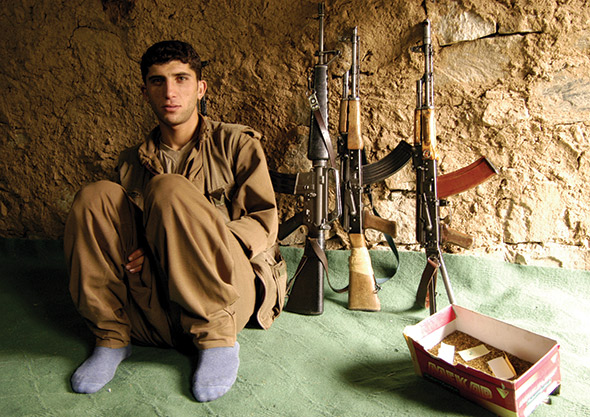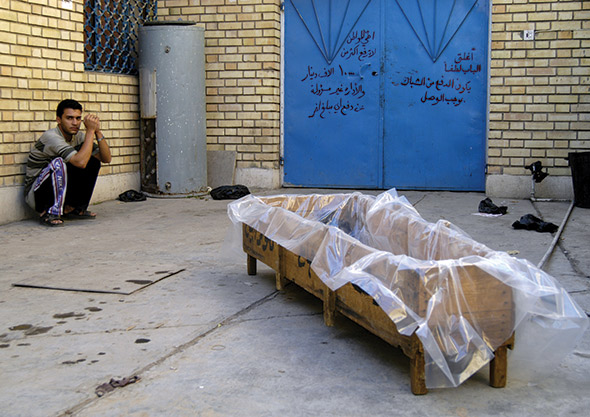Two photographers find beauty in the war-torn.


Text by Fiona Killackey
Holiday photos usually feature blood-orange sunsets, cocktails, tans and a beach that spans over an imaginary horizon. Eliciting memories of a distant time in which you escaped the drone of keyboards, the painful tone of an alarm and the inane chatter on the subway, they take you back to a place you long to revisit. Yet, what if your chosen destination was a war-torn country, plagued by poverty, violence, corrupt policies and a population that knew little of their future? What if you chose to spend your vacation in a country made barren through unemployment, rife with crime and living on the cusp of social unrest?
SOMA caught up with two photographers who ventured into unfamiliar territory in their travels. While their experiences could not be more diverse, both made a decision to enter into foreign lands that would test their knowledge, prejudices, and political, religious and moral beliefs in order to capture the unknown.
Jake Nowakowski has spent years capturing political unrest and social upheaval through the camera lens. In October 2003, he travelled to Iraq to behold the land “six months after George Bush claimed victory.” It was the second trip Nowakowski had made to Iraq in 12 months, the first changing his life forever. “It made me realize certain truths, the biggest truth being that in conflict, there is no truth, however, there is truth in suffering and suffering exists in conflict,” says Nowakowski. “I learned a lot about myself, that I had abilities and strengths that I wasn’t aware of until I had put myself under duress.” Spending time in morgues, with parents of children killed by war and with those carrying the physical and emotional scars of conflict was a confronting experience. “It made me humble and at the same time confident. It taught me to trust my instinct and ability,” Nowakowski says before suggesting, “it also taught me to overcome my doubts.”
Nowakowski has also recently worked in Nepal. “The situation then wasn’t as bad as it is now,” admits the photographer who is currently researching various topics he hopes to bring to life via the lens. “I hope to travel soon and undertake more work in what some people may claim to be undesirable places.” Delving into areas torn apart through conflict and managing to capture the intensity found therein is not a trait common to all photographers, Nowakowski warns. “I always strive to establish a genuine and mutual empathy with my subjects. This empathy comes from a genuine understanding of the position of the people depicted in the picture. It could even be put down to sympathy for the subject and their situation, especially if there is suffering or injustice involved. This empathy has to be genuine. It cannot be faked or contrived. The photographer has to be well-informed and aware of the historical, political, cultural and social aspects of his chosen topic and subject. He also has to believe in the reasons for carrying out his work.”
Half a continent away is where another photographer finds her subjects. “The best way to capture the atmosphere,” starts Dominika Debska, “is with an open mind and an open heart.” In 2005, Debska spent two months living in the Nubian villages of Edfu and Aswan in Egypt. “Nubians are a small and vibrant culture, existing peacefully within the dominant Egyptian one,” says Debska. “The aim of my photography is to provide an insight into their lives, through some of their rituals and their environment.” According to Debska, few travelers are aware of the Nubian culture that exists within Egypt and Sudan – areas unfortunately becoming more well-known for political unrest and recent bombings than for housing this age-old tribe. Yet, Aswan and the ancient cities surrounding the east bank of the Nile have long been a form of inspiration for writers, poets, musicians and artists (most recently for French hip-hop duo Les Nubians).
“On the banks of the Nile in the summer months, there are mangoes everywhere covering the ground,” says Debska, who usually doesn’t ask permission before snapping away. “I do sometimes, but I prefer not to. I like candid and natural photography. Actually, the ideal situation for me is when people ask to have their photo taken.” Such was the case with Debska’s images of young girls and women in Aswan. “The ladies asked me to take their picture. They really had something to say to the camera.” Such requests appear to contradict the image of demure, camera-shy Muslim women often (incorrectly) depicted in Western media. Skewed representation of Muslims in the West, some would argue, has helped fuel prejudice against minority groups throughout much of the Western world, particularly after 9/11.
Such ignorance and discrimination is rarely witnessed in Aswan. “The media there is not so ‘sophisticated’ and hence it’s less pervasive and intrusive. People are too busy with day-to-day life, or even… day-to-day survival,” says Debska. “Propaganda is exactly what it is. Mostly I met people trying to get on with their lives, in peace, just as most of us are. We may all be different, yet travelling to such places reiterates that we are very much the same.”

